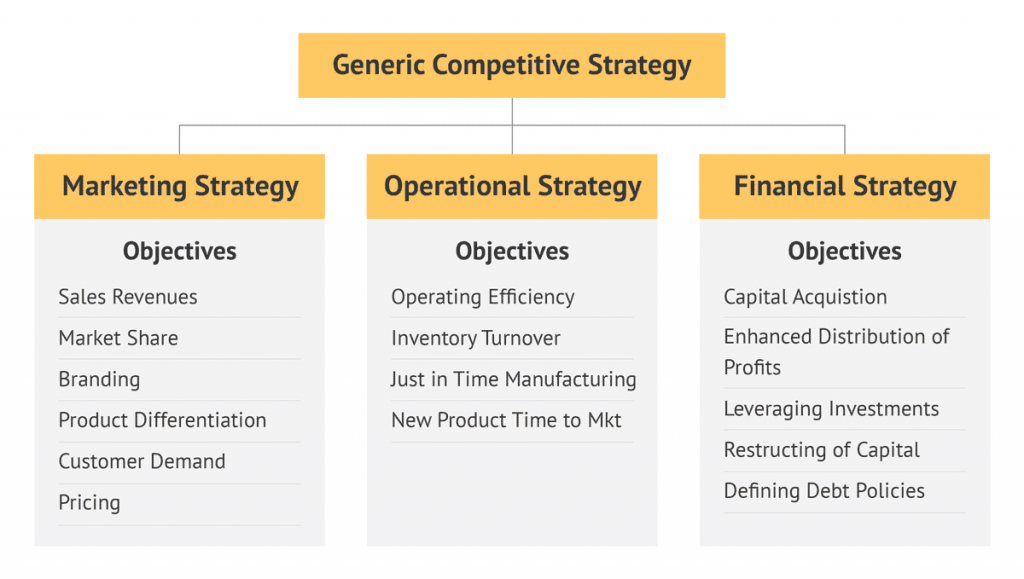Business Strategy As Distinct From Corporate Strategy Is

The intricate dance of strategic decision-making within organizations often blurs the lines between business strategy and corporate strategy, leading to potential misalignment and missed opportunities. While both aim for organizational success, their scope, focus, and execution differ significantly, impacting resource allocation, competitive positioning, and ultimately, the bottom line.
Understanding the nuanced distinction between these two strategic frameworks is crucial for businesses of all sizes. This article delves into the defining characteristics of each, highlighting their roles, responsibilities, and the potential consequences of conflating them.
Defining Business Strategy
Business strategy, at its core, focuses on how a specific business unit within a larger corporation competes within its particular industry or market. It's about achieving a sustainable competitive advantage within that specific arena, maximizing profitability and market share.
Professor Michael Porter of Harvard Business School, a leading authority on competitive strategy, emphasizes the importance of choosing a clear and defensible competitive position. This could involve cost leadership, differentiation, or focusing on a specific niche market.
Key elements of business strategy include defining the target market, analyzing the competitive landscape, developing a value proposition, and establishing operational efficiencies. This encompasses decisions on product development, marketing, sales, and customer service, all tailored to the specific business unit’s needs.
The "How" of Competition
Think of a large conglomerate like Unilever. Each of its product categories—food, personal care, home care—operates with a distinct business strategy tailored to its respective market.
The food division, for example, might focus on organic and sustainable sourcing to appeal to health-conscious consumers. Meanwhile, the home care division might prioritize cost-effectiveness and efficiency to compete in a price-sensitive market.
These strategies are developed independently, considering the unique challenges and opportunities within each business segment.
Understanding Corporate Strategy
Corporate strategy, on the other hand, takes a broader, more overarching perspective. It focuses on the overall direction and scope of the entire organization, encompassing multiple business units and industries.
Its primary concern is how the corporation as a whole creates value, not just within individual businesses, but across the entire portfolio. This includes decisions on mergers and acquisitions, diversification, resource allocation across business units, and portfolio management.
Essentially, it answers the question: "What businesses should we be in, and how do we manage them to create synergy and overall value?"
The "Where" and "Why" of the Business
Consider Amazon. Its corporate strategy extends far beyond its initial e-commerce platform. It encompasses cloud computing (AWS), streaming services (Prime Video), grocery stores (Whole Foods Market), and even space exploration (Blue Origin).
This diversification is driven by a corporate strategy that seeks to leverage its core competencies in technology, logistics, and customer service across multiple industries. The aim is to create a synergistic ecosystem where each business unit reinforces the others, adding value to the overall enterprise.
The strategic decision to acquire Whole Foods, for example, was not a decision made by the existing e-commerce business unit. This decision, instead, was made at the corporate level, with the goal of furthering Amazon’s reach into the grocery and food delivery markets.
The Interplay and Potential Pitfalls
The relationship between business strategy and corporate strategy is interdependent. A well-defined corporate strategy provides the framework within which individual business strategies can thrive. But, a flawed corporate strategy can hinder the performance of even the most well-executed business strategies.
One common pitfall is neglecting to align business strategies with the overall corporate vision. When business units pursue conflicting goals or compete for scarce resources, the organization suffers.
Another mistake is failing to adequately support business units with the resources they need to execute their strategies effectively. This could involve underinvestment in research and development, inadequate marketing support, or insufficient training for employees.
"Companies must ensure that their business strategies are aligned with the overall corporate strategy to maximize synergy and value creation," emphasizes a recent report by McKinsey & Company.
The Impact on Organizations and Stakeholders
The strategic choices made at both the business and corporate levels have profound implications for an organization's success, impacting stakeholders including employees, customers, investors, and the broader community.
A clear and well-executed corporate strategy can enhance shareholder value, attract top talent, and build a strong brand reputation. Conversely, a poorly defined or implemented strategy can lead to financial losses, reputational damage, and employee morale problems.
Effective business strategies, on the other hand, can lead to increased market share, higher profitability, and greater customer satisfaction. They also contribute to a more competitive and innovative marketplace.
For instance, consider a company struggling with stagnant growth. Implementing a new corporate strategy focused on innovation and diversification could revitalize the organization, leading to new product launches, job creation, and increased economic activity.
However, this requires aligning business strategies within each new venture to effectively compete in their respective markets, ensuring the success of the overall corporate endeavor. It's not just about 'what' but also about 'how' businesses are being managed within the larger corporation.


















